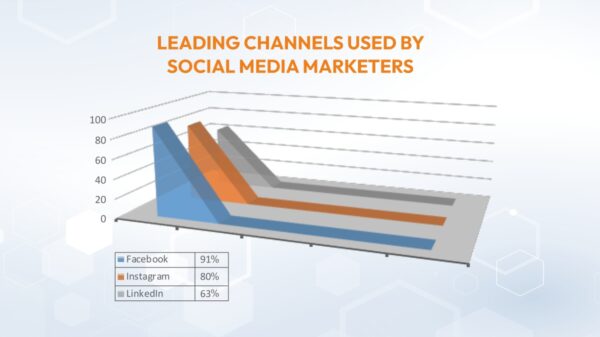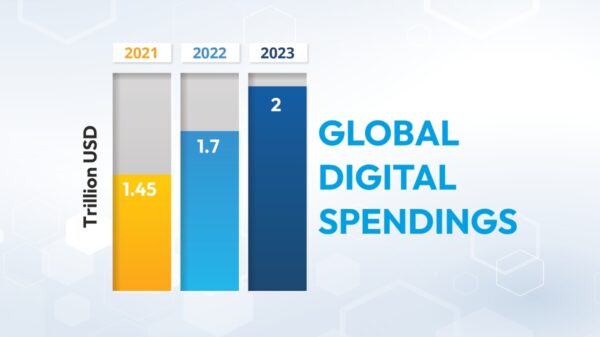The world of digital marketing is constantly evolving. Given how quickly technology is evolving, business concerns must be approached with discipline. Conducting a SWOT analysis is essential to help you launch your company and maintain a competitive edge. It is a type of organized planning that may be used to plan for a company, a service, an industry, a location, or even a specific person. When launching a business or evaluating a product in the field of digital marketing, using SWOT analysis will help you understand where you stand and how to take advantage of the numerous opportunities in your sector. Even before you contemplate investing any money in a marketing strategy, a SWOT analysis should be conducted. In actuality, SWOT analysis may be used at a personal level in addition to by businesses or digital marketing agencies.
Although traditional uses of the technique are more frequently mentioned, SWOT analysis is also quite beneficial for social media. I’ll go into more depth on how SWOT might benefit social media tactics in this piece. Always keep in mind that every strength is also a possible vulnerability and vice versa while doing a SWOT analysis. Every threat is a possible opportunity, and every opportunity is a threat.
We still cannot deny the significance of SWOT analysis in our contemporary era of marketing, advertising, and communication. Digital brands are now performing SWOT analyses on a whole new level. Digital advertising companies only became aware of the value of a viral article as opposed to outmoded strategies like email marketing and press releases after doing a SWOT analysis. This post will examine how a SWOT analysis may assist a firm in developing its marketing strategy in accordance with its strengths and opportunities while addressing threats and weaknesses. Let’s first examine what constitutes a SWOT analysis.
SWOT is a four-part study of a company’s operations, resources, and performance. The company’s tactical advantage is then developed using these four key elements.
Strengths (S): are a company’s or a brand’s qualities and attributes that provide them an edge over rivals.
Weaknesses (W): Contrary to the aforementioned, a company’s or brand’s strengths and traits place it at a competitive disadvantage.
Opportunities (O): Features and possibilities that a company or brand may take advantage of.
Threats (T) are environmental factors and circumstances that can harm a company’s reputation or brand.
The dedication to the planning process or the drivers behind the SWOT’s inception affect how a business acts with each entry that has been recognized. The SWOT starts a discovery process of organizational and external phenomena that might impede success, regardless of whether it is utilized for long-term planning or short-term comprehension of unmet goals.
Even while conducting a thorough SWOT analysis that incorporates input from various sources might take a very long time, the advantages of learning new things and getting fresh ideas have a very sobering effect. There is an even more time-efficient choice. Separate analyses can be started by each organizational process, department, and site, and customized results can be sent to senior management. This gives the company a bottom-up examination and gives management a thorough understanding of every organizational division. Time may be saved by segmenting the organization and requesting different managers and departments to do compartmentalized SWOT analyses while still allowing for a thorough analysis of the firm.
Strength
The favorable internal elements of your organization are considered strengths in a SWOT analysis. The advantages of your company should be compared to those of your rivals. For instance, if you think your company excels in partnership marketing but all of your rivals do as well, this isn’t a strength. A strong brand, distinctive technology, a compelling USP, exceptional organic search exposure, and outstanding content marketing are a few examples of strengths.
The good qualities of the individuals working for your organization, such as their expertise, training, and abilities, are known as intangibles (such as SEO strategy and copywriting). Additionally, it may be your brand’s reputation and its wide reach on social media. Once you’ve determined your company’s strengths, you may work to maintain, capitalize on, and develop these good aspects as your advantages. For instance, you will be aware of the high skill availability in your industry. You can hone such abilities, and that is the element you may emphasize more in your marketing plan.
Weakness
After determining your organization’s strengths, you should be able to swiftly determine its limitations. In a SWOT analysis, weaknesses are the detrimental internal variables impacting your company. A bad pricing strategy, a marketing budget that is insufficient to meet goals, a marketing staff that is too small, and a lack of a strong brand strategy are a few examples of flaws. The tangible or intangible elements that you need to improve on in order to compete and outperform your rivals are contained in your weaknesses. These are the drawbacks that you must overcome. Accurately identifying your limitations can help you understand your own company better, which will allow you to make more improvements.
Opportunities
Opportunities are the favorable external circumstances that can have an impact on your organization in a SWOT analysis. You want to find any outside factors that could provide you with a competitive edge. Changes in marketing technology, how individuals with the necessary marketing abilities are hired using services like Upwork and People Per Hour, in-laws, and sociocultural trends are a few examples of potential. Opportunities are the alluring outside forces that will be the driver of your company’s existence and expansion. These are the positive potentials that you may achieve by putting your marketing tactics into practice.
Threats
Threats are the unfavorable external aspects of a SWOT analysis. You must take into account the dangers that can affect the success of your marketing and business. Regulations changing, a rival developing proprietary technology, your target audience’s sentiments shifting, and increased advertising expenditures are a few examples of dangers. Threats are the adverse things that come from outside your company, whereas opportunities are the favorable things. These are the outside variables that might endanger the longevity and expansion of your company. Although you have no power over them, you could gain by developing elaborate preparations to get past them.
A statistical overview of the Digital market in India
India is one of the fastest-growing major economies in the world, and this is happening on the back of a strong and robust digital revolution. And digital marketing is growing on similar lines.
The value of digital markets in India for the year 2020 was 230 billion USD, and in 2021 it was 300 billion USD. The impact of the COVID-19 pandemic is very palpable, and it is projected that by 2022 it will climb up to 380 billion USD.
SWOT – A tool for Growth
Check to discover whether your opportunities and strengths are connected. For instance, you could have a website that ranks highly for SEO and has discovered popular search phrases for which you have not yet optimized. Creating additional landing pages for these popular search phrases may help your website rank for them rapidly, depending on how effective your SEO is. You should also consider whether your threats and vulnerabilities are closely related to one another. For instance, you could have a poor brand, and a recent rival with a great brand might exist. This kind of circumstance poses a significant threat, given your vulnerability.
Hiring a branding firm or consultant to assist you in developing your brand strategy to compete with your rival may be one solution. Once this analysis and any other analyses you choose to utilize to guide your decisions are finished, you may develop your strategy and specify your strategic goals.
Regular SWOT analysis is crucial for enterprises and organizations, especially before releasing a new product. In order to examine marketing positions for their clients, marketing experts and students need to become proficient in SWOT analysis. Make sure you have all the necessary facts before making final judgments on the direction of a brand or business, which a SWOT analysis may give. Finally, a SWOT analysis may help a business come up with innovative ways to solve problems and make strategic plans for both short-term and long-term efforts. It can offer insight to pinpoint a problem’s root cause, discover extra support for already-in-use procedures, and open up strategic avenues for new proposals, projects, and ideas.





